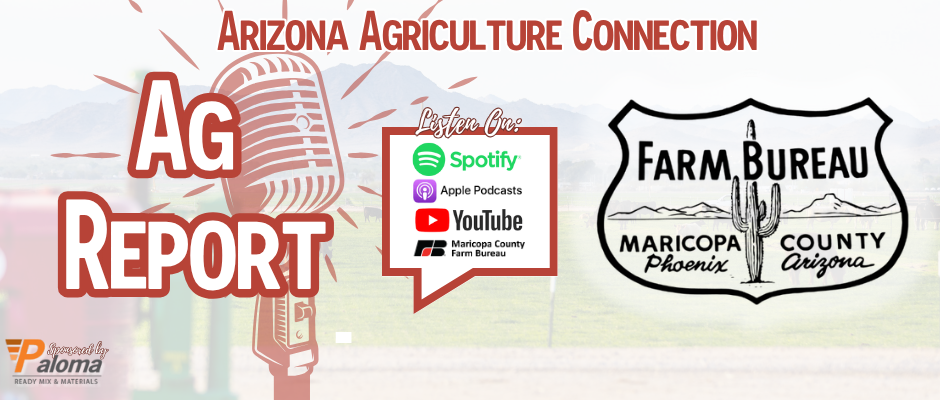Arizona Agriculture Connection Ep. 7-Katie Aikins
- Nicole Clements

- Apr 30
- 3 min read
Unpacking the Complex World of Food Labels: Understanding What’s on Your Plate
Welcome back, Arizona Aggies! In our latest episode of Arizona Agriculture Connection, we ventured into the intricate world of food labeling with Katie Akins, the Director of Education for Arizona Farm Bureau. Together, we demystified what those various stamps and stickers on food products actually mean and how they impact your grocery shopping decisions.
A Journey into Understanding Food Labels
Katie Akins shared her journey from high school to her current role at the Farm Bureau, emphasizing her long-standing passion for agriculture. Through engaging discussions, we delved into the historical evolution of food labeling, tracing its roots back to the 13th and 14th centuries when food products were first stamped to ensure they were unadulterated.
The Origins of Modern Food Labeling
In the late 1850s, prominent food producers like Frederick Papps and H.J. Heinz recognized the need for standardization in food production. This led to the establishment of the USDA by President Abraham Lincoln in 1862, aiming to regulate food processing and ensure safety.
By 1906, the Pure Food and Drug Act was implemented to prohibit misleading food labels. Fast forward to recent history, the Nutrition Labeling and Education Act of 1990 made nutritional facts mandatory, paving the way for further updates, such as serving sizes and the inclusion of added sugars in 2020.
Decoding the Labels
Amid a sea of labels like "grass-fed," "organic," and "certified organic," consumers are often left confused. Katie emphasized that while all grocery store food is safe, understanding labels can help consumers make healthier choices that align with their values and dietary needs.
Organic vs. Non-Organic: Clearing the Air
The USDA manages the organic label, and while "100 percent organic" means all ingredients meet strict standards, a simple "organic" label signifies that 95 percent of ingredients are organic. This complexity often leaves consumers befuddled about the authenticity and significance of the labels on their produce.
The Marketing Mirage
Terms like "gluten-free" are used liberally, often creating unwarranted assumptions about the presence of gluten in foods where it's naturally absent. Labels such as "grass-fed" and "cage-free" may suggest humane and health-conscious farming practices, but they primarily inform us about what the animal ate or their housing conditions, rather than the well-being of the animal itself.
Making Informed Choices
The takeaway from our discussion with Katie is clear: All food available in grocery stores is safe. Still, consumers must educate themselves to understand the nuances of food labels. With resources like the National Agricultural Library and USDA websites, as well as less formal consumer-friendly sites like Best Food Facts, there's plenty of information available to aid in making informed decisions.
Listen and Learn More
Our farmers shop alongside us, and even they're not immune to the complexities of the modern grocery store. The intricate labels serve as a reminder of the need for ongoing education and informed choices.
For a more in-depth exploration into food labeling, check out our complete podcast episode. And, if you have more questions, feel free to submit them on our website. We're here to feed your curiosity and equip you with the knowledge needed to navigate the complex world of food labels.
Tune in next Wednesday for another enriching episode of Arizona Agriculture Connection. Until then, happy and informed shopping!





Comments